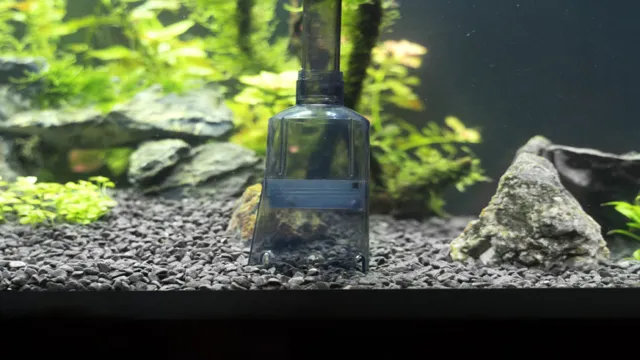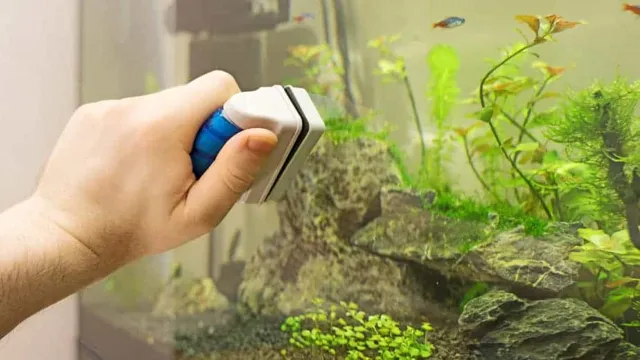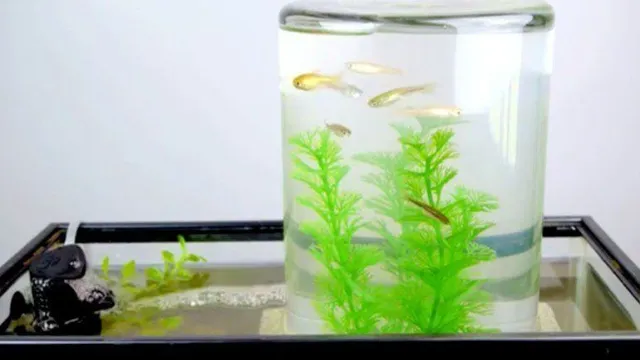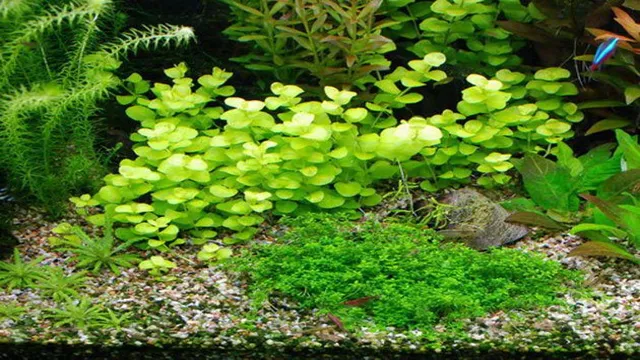Keeping a marine aquarium is a great hobby as it provides us with a glimpse into an underwater world. However, maintaining the harmony of a marine aquarium is quite challenging, and one of the most challenging aspects is keeping the nitrate levels. Nitrate is a commonly found element in a marine aquarium, and at low levels, it doesn’t pose any problems.
But when the nitrate levels get high, it can cause trouble for the aquarium inhabitants and their health. High nitrate levels can cause diseases, algae blooms, and even endanger the aquatic life. Therefore, it is essential to lower the nitrate levels in a marine aquarium to keep it healthy and thriving.
But how do you achieve it? In this blog, we will discuss some of the effective ways to lower nitrate levels in a marine aquarium.
Understanding Nitrate and Its Effects on Marine Life
If you keep a marine aquarium, then it’s important to understand the role of nitrate and its effect on your aquatic pets. Nitrate is a naturally occurring chemical compound that is produced when organic matter decomposes. Excessive amounts of nitrate can cause harmful algae blooms, leading to low oxygen levels and even death of marine life.
Fortunately, there are ways to lower nitrate levels in your aquarium. One method is to perform regular water changes, which can remove excessive nitrate and other harmful chemicals from the water. Another way is to incorporate live plants and algae into the tank, which can absorb and convert nitrate into harmless compounds.
Additionally, using biological filtration, such as protein skimmers and denitrifying bacteria can also help lower nitrate levels. Remember, maintaining healthy nitrate levels is crucial to the health and survival of your marine pets.
Sources and Causes of Nitrate Buildup in Marine Aquariums
Nitrate buildup is a common issue in marine aquariums and can have serious effects on aquatic life if not properly managed. Nitrate is a compound that occurs naturally as part of the nitrogen cycle, which is important for the growth of beneficial bacteria in the aquarium. However, excessive levels of nitrate can cause a variety of problems, including poor water quality, algae growth, and even fish and coral death.
The sources of nitrate buildup can include overfeeding, overstocking, and inadequate filtration and water changes. It is important for aquarium owners to understand the causes of nitrate buildup and take steps to control it to maintain a healthy and vibrant aquatic environment. Regular water testing, proper feeding and maintenance, and the use of effective filtration systems can all help to prevent nitrate buildup and promote the overall health of your marine aquarium.
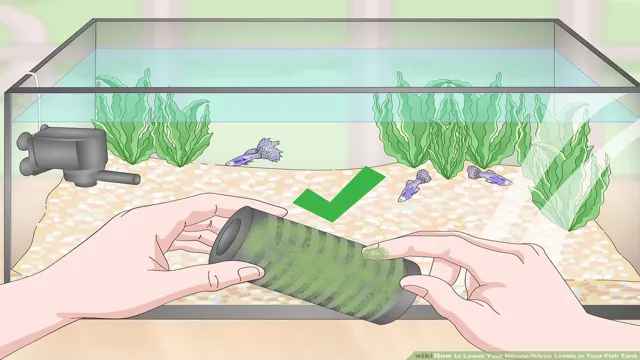
Importance of Maintaining Low Nitrate Levels in Marine Aquariums
Nitrate Maintaining low nitrate levels is essential for a healthy marine aquarium. Nitrate is a natural byproduct that accumulates in the water from the breakdown of organic matter, such as food and waste. High nitrate levels can lead to various health issues in fish, crustaceans, and other marine creatures.
It can cause stress, stunted growth, and even death. Additionally, low nitrate levels help prevent the overgrowth of algae, which can harm the overall health of the aquarium. Therefore, it is crucial to regularly test the nitrate levels and perform water changes to keep them below recommended levels.
With proper maintenance, you can create a thriving and healthy aquatic environment for your marine pets.
Measurement and Monitoring of Nitrate Levels
Maintaining proper nitrate levels in your marine aquarium is crucial for the health of your aquatic life. High nitrate levels can stress and even kill your fish and coral, while low levels can limit their growth and pigment development. The first step in lowering nitrate levels is to measure and monitor them regularly.
You can do this by using a nitrate test kit and recording the results in a logbook. Once you have an idea of your aquarium’s nitrate levels, you can take steps to lower them. This may include increasing water changes, adding nitrate-reducing bacteria, reducing feeding, and adding macroalgae or denitrifying filters.
By monitoring and adjusting nitrate levels in your marine aquarium, you’ll ensure a healthy and thriving aquatic environment for your underwater friends, all while using the main keyword naturally throughout your content. (See Also: How to Keep Aquarium Water Oxygenated: Top Tips for Optimal Fish Health)
Using Test Kits to Measure Nitrate Levels in Marine Aquariums
Nitrate Test Kits for Marine Aquariums As an aquarium owner, monitoring the nitrate levels in your marine water tank is crucial for the health and well-being of your fish and corals. Nitrate levels can quickly rise in an aquarium due to overfeeding, overstocking, or inadequate filtration, leading to fish and coral stress, illness, and even death. To prevent this, it is essential to measure and monitor nitrate levels regularly.
The most convenient and accurate way to do this is by using nitrate test kits. These kits are readily available in aquarium stores and online, and they come with clear instructions for use. By adding a small sample of aquarium water to the kit, you can measure the nitrate concentration in parts per million (ppm).
Based on the nitrate levels, you can then take appropriate action, such as water changes or reducing feeding to keep the nitrate levels in check. Always remember that maintaining the correct nitrate levels in your aquarium is crucial for the overall health and happiness of your aquatic pets.
Establishing a Regular Testing Schedule for Nitrate Levels in Marine Aquariums
Nitrate Levels in Marine Aquariums Nitrate levels are one of the essential parameters that need to be monitored to maintain a healthy marine aquarium. Nitrates can come from various sources such as fish waste, uneaten food, and decomposition of organic matter. High nitrate levels can harm the aquatic life in the tank, and it is crucial to establish a regular testing schedule to ensure that the levels remain within safe limits.
Regular testing and monitoring can prevent nitrate levels from exceeding safe limits and can also help diagnose any potential problems early on. There are various methods for testing nitrate levels, such as test strips, liquid test kits, and electronic testers. It is recommended to test nitrate levels at least once a week, but the frequency can vary depending on the size of the tank and the number and type of fish and other organisms in the aquarium.
By regularly measuring and monitoring nitrate levels, aquarists can ensure the health and longevity of their marine animals.
Methods for Reducing Nitrate Levels in Marine Aquariums
If you’re a fan of marine aquariums, you’re probably aware of how important it is to keep nitrate levels in check. High levels of nitrate can lead to various issues, from poor fish health to an overgrowth of algae. Thankfully, there are several methods for reducing nitrate levels in your aquarium.
One effective approach is to perform more frequent water changes. Regular water changes help to reduce the buildup of nitrate and other harmful substances that can accumulate over time. Another method is to invest in live plants or algae that can consume nitrate.
These natural filters can be a great addition to any marine aquarium and can help to maintain a healthy ecosystem. Finally, consider investing in a specialized nitrate-removing filter. These filters use materials such as resins or absorbent pads to remove excess nitrate from the water.
By employing one or more of these methods, you can help to ensure that your marine aquarium stays healthy and thriving for years to come.
Performing Regular Water Changes to Dilute Nitrate Concentrations
Regular water changes are an effective way to reduce nitrate concentrations in marine aquariums. Nitrate is a natural byproduct of the nitrogen cycle and can accumulate over time, leading to poor water quality and aquatic health issues. In order to maintain a healthy environment for your marine animals, it’s important to stay on top of nitrate levels.
One effective method is to perform regular water changes, where a portion of the aquarium water is removed and replaced with fresh, clean water. This dilutes nitrate concentrations and helps keep other parameters stable. The frequency and amount of water changes needed will depend on the size of the aquarium, the types of animals living in it, and other factors.
Overall, regular water changes are an essential part of maintaining a healthy marine aquarium and keeping nitrate concentrations in check.
Using Protein Skimmers to Remove Organic Matter and Nitrate from Water
If you’re a marine aquarium enthusiast, you know the importance of maintaining a healthy nitrogen cycle. However, high nitrate levels can be detrimental to your fish and coral. Luckily, there are several ways to reduce nitrate levels, including using a protein skimmer. (See Also: How to Clean New Sand for Aquarium: A Step-by-Step Guide for Pristine Tank Environment)
A protein skimmer works by removing organic matter from the water column before it has a chance to break down and contribute to nitrate levels. Essentially, it creates a foam that captures organic waste and removes it from the water. Not only does this reduce nitrate levels, but it also helps keep the water clear and clean.
Protein skimmers are a reliable and effective method for maintaining a healthy and balanced marine environment in your aquarium.
Incorporating Macroalgae or Plants to Actively Absorb Nitrate
Reducing Nitrate Levels in Marine Aquariums If you want to reduce the nitrate levels in your marine aquarium, you can try incorporating macroalgae or plants that actively absorb nitrate. These aquatic plants utilize nitrogen from nitrate as a nutrient source and convert it into biomass. Macroalgae and plants also act as a natural biofilter by adsorbing and absorbing harmful chemicals and particles in the water, thereby improving water quality.
Some popular macroalgae species include Ulva, Chaeto, and Caulerpa, while some suitable aquarium plants include Anubias, Java Fern, and Hornwort. However, it is essential to maintain proper lighting, nutrients, and water parameters to promote healthy growth and prevent excess nutrient levels. By incorporating macroalgae or plants, you can create a natural and sustainable solution to reduce nitrate levels in your marine aquarium.
Limiting Feeding and Proper Waste Management to Control Nitrate Buildup
Reducing Nitrate Levels in Marine Aquariums A buildup of nitrates in your marine aquarium can be disastrous for your fish and coral. Thankfully, there are methods to control nitrate levels. One effective method is limiting feeding.
Overfeeding is a common mistake in aquarium management, and it can result in an excess of uneaten food and waste. This waste decomposes and releases nitrate into the aquarium water. By limiting feeding to what your fish can eat in a few minutes, you’ll reduce the amount of waste produced.
Proper waste management is also crucial. Regularly cleaning your aquarium and removing waste materials will lower the nitrate levels in the water. Additionally, adding live plants to your aquarium can help absorb nitrate and reduce levels.
Taking these steps will help keep your aquarium healthy and ensure your fish and coral thrive.
Preventative Measures to Maintain Low Nitrate Levels
Maintaining low nitrate levels in your marine aquarium is important for the health of your fish and other aquatic creatures. One of the best preventative measures you can take is to keep an eye on your feeding habits. Overfeeding your fish can lead to an excess of food in the tank, which can then lead to increased levels of nitrate.
Try to only feed your fish what they can finish in a few minutes and remove any uneaten food. Additionally, make sure to perform regular water changes to keep the nitrate levels in check. Some hobbyists recommend using live plants in the aquarium as they can absorb some of the nitrates.
Another way to lower nitrate levels is to incorporate a protein skimmer into your filtration system. This equipment will help remove organic waste before it breaks down into nitrate. By taking these preventative steps, you can help ensure that your marine aquarium remains a safe and healthy environment for your aquatic pets.
Avoid Overstocking the Aquarium
Overstocking your aquarium can lead to a variety of issues such as high nitrate levels, which can harm your fish and negatively impact the overall health of the ecosystem. To maintain low nitrate levels, there are a few preventative measures you can take. Firstly, avoid overstocking your tank – ensure you only keep the number of fish that your aquarium can support.
Secondly, perform regular water changes and filter maintenance to remove excess waste and debris. Proper filtration is essential in preventing an accumulation of nitrates. Lastly, consider incorporating live plants into your aquarium as they can act as natural filters and absorb excess nitrates. (See Also: Is PLA Aquarium Safe? A Comprehensive Guide to Understanding the Safety of PLA in Aquatic Environments)
By following these procedures, you can prevent high nitrate levels and ensure a healthy environment for your aquatic friends. So, keep your aquarium well-stocked, but not overstocked, and maintain the necessary upkeep to keep nitrate levels low. Your fish will thank you for it!
Controlling Lighting and Algae Growth to Reduce Nitrate Sources
To maintain low nitrate levels in your aquarium, it’s essential to control lighting and algae growth. Algae can be a significant source of nitrate in aquatic systems, and it thrives in bright light. By reducing the amount of light in your tank, you can help to prevent excessive algae growth, in turn, reducing nitrate production.
One effective method of limiting light exposure is by using a timer to control the lighting schedule. By setting the light to come on for only eight to ten hours a day, you can help to reduce the amount of time algae has to grow. You can also choose to use low-light plants instead of high-light plants, which are less likely to encourage excessive algae growth.
Another way to prevent nitrate buildup is to reduce the amount of food and waste in your tank. Overfeeding your fish can lead to excess waste, which can break down into nitrate. You can also regularly clean your tank, remove any dead or decaying plant matter or uneaten food to prevent waste buildup.
Finally, consider using chemical filtration systems like activated carbon or nitrate-removing media to absorb nitrate in your aquarium. In conclusion, by maintaining a healthy balance between light, algae growth, and reducing waste, you can prevent nitrate buildup and maintain low nitrate levels in your aquarium.
Regular Maintenance and Cleaning of Aquarium Equipment and Substrate
Maintaining low nitrate levels is crucial for the health of your aquarium and its inhabitants. By regularly maintaining and cleaning your aquarium equipment and substrate, you can prevent an excess buildup of waste and debris which can lead to high nitrate levels. One preventative measure is to perform regular water changes to remove any excess nitrates.
Additionally, using a high-quality filtration system and cleaning it regularly can help keep nitrate levels under control. It’s also important to avoid overfeeding your fish, as uneaten food can contribute to excess waste and nitrate buildup. Overall, taking these preventative measures can ensure a healthy and thriving aquarium environment for your aquatic friends.
Conclusion: Ensuring a Healthy Environment for Marine Life
In conclusion, keeping nitrate levels low in a marine aquarium requires a combination of proper aquarium maintenance and strategic additions to the tank’s ecosystem. Whether you choose to invest in protein skimmers, incorporate live plants or algae, or simply stay diligent with water changes and filter maintenance, the key is consistency. So take a step back and assess your current aquarium routine, and remember, a happy and healthy aquarium is the result of a happy and healthy aquarist.
Happy scaping!”
FAQs
1. What causes high nitrate levels in a marine aquarium? A: High nitrate levels in a marine aquarium can be caused by overfeeding, poor filtration, or lack of water changes. 2. What are the dangers of high nitrate levels in a marine aquarium? A: High nitrate levels can lead to poor water quality, algae growth, and unhealthy fish and invertebrates. 3. How often should I do water changes to lower nitrate levels? A: It is recommended to do a 10%-20% water change every 2-4 weeks to help keep nitrate levels under control. 4. What types of filters can help lower nitrate levels? A: Biological and chemical filters, such as protein skimmers and nitrate reactors, can help remove excess nitrate from the water. 5. Can live plants help lower nitrate levels in a marine aquarium? A: Yes, live plants can help lower nitrate levels by absorbing them as a nutrient source. 6. How can I test my nitrate levels in my marine aquarium? A: Nitrate test kits are available at most pet stores and online retailers. Follow the instructions carefully to get an accurate reading. 7. Are there any natural ways to lower nitrate levels in a marine aquarium? A: Yes, adding live rock or sand, as well as macroalgae, can help absorb excess nitrate and lower levels in the aquarium.

